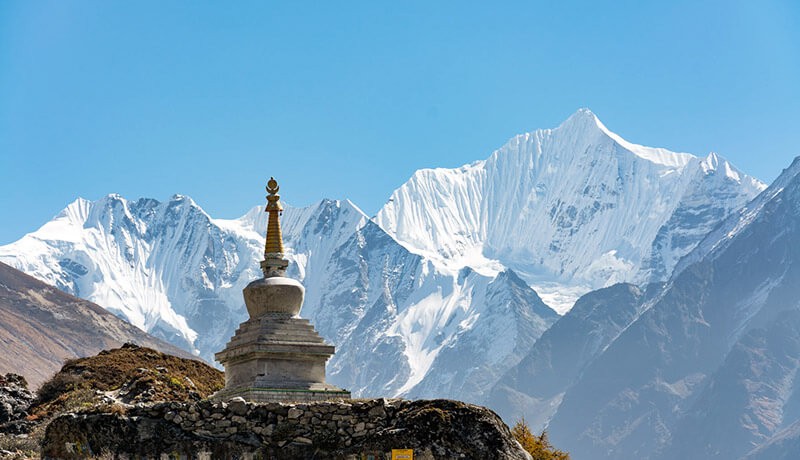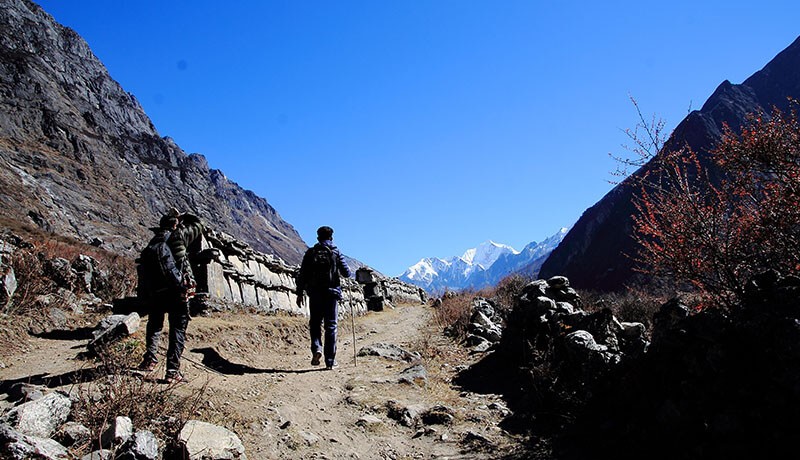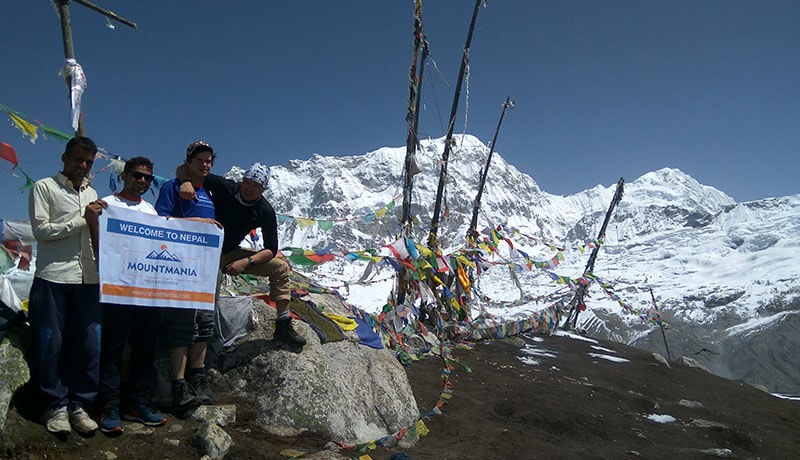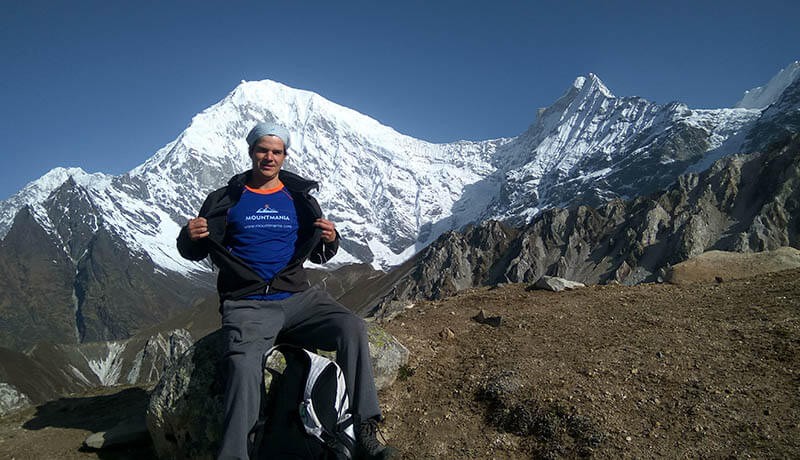Trip Details
Destination: Nepal
Trip Difficulty: Easy
Trip Style: Trekking
Transport: Public Vehicle
Food: Breakfast, Lunch & Dinner
Accommodation: Teahouse or Lodge
Group Size: 2-16
Max Elevation: Tserko Ri (5000m)
Highlights
- Less crowded, off-the-beaten pathways
- Explore the pristine “valley of Glaciers”
- See mountains from the first day of the trek. The mountains include Yala Peak, Naya Kanaga, and several others.
- You can do both camping and teahouses trekking in this region. This region is stunning fro camping.
- Hike to Kyanjin Gompa, 3870 meters, the highest point in this trek in the valley
- Explore the Tibetan Buddhist Culture
- Walk through the diverse forests of oaks, bamboo, rhododendron and millions of other flora and fauna
- Interact with the Tamang people, the survivors of Gorkha Earthquake 2015
- Walk through Langtang National Park
- Take a sip of special coffee at Kyanjin Gompa enjoying the stunning views around.
- Learn about the cheese making process in the Cheese factory at Yak Kharka.
- Explore Langtang Glacier
Description
Langtang Valley Trek is one of the short-distance trek nearest to Kathmandu valley. This trek is an exotic journey into the land of Glaciers in the Langtang valley. This is a less-crowded trek than other popular trekking trails in Nepal.
This short and moderate trek starts from Kathmandu and you will cover 19 miles. This trek takes you to the maximum height at Kyanjin Gompa at 3870 meters. Around 8 hours drive from Kathmandu, you will reach Syabrubeshi and start the actual trek on foot.
From the trailhead, you will walk across the stunning landscapes, exotic forests, and diverse vegetation. The yak pastures and alpine meadows on the trekking trail accompany you throughout the trek. Then you gradually walk to the re-built Langtang Valley and Kyanjin Gompa.
On proceeding further on the trek, you will walk through Langtang National Park. So you need to get Langtang National Park entry permit to enter this region. Additionally, you also need Local Area Permit for this trek. Along with the cost of permits, the cost of the Langtang Valley trek is USD 600. It includes the costs of guide and porters, food, accommodation, transportation, and so on.
You will walk through the local settlements of Tamang, Sherpa and Tibet-influenced people. You will know about their culture and religious practices. Also, you will also find a local teahouse for the food and comfortable lodging on many parts of the trekking trail.
Plus, since the trek is a moderate grade, you can plan to do solo trekking as well. However, for safety and comfort, we recommend hiring a guide and porter for this trek.
We have 7 days itinerary for this trek which covers major highlights of the Langtang region. But if you want to spend more days on the trek, or plan to customize the trek, we are happy to re-design the tour for you.
We can plan the Langtang, Gosaikunda and Helambu trek for you if you wish to spend long days in the region. Or, you can also join our Tamang Heritage trek to know more about the Socio-cultural life of Langtang region.
Contact us to share your preferences.
Useful Information
Best Time for Langtang Valley Trek
The months of September, October, and November is the peak time for the Langtang Valley trek. These months have the most pleasurable trekking experiences on offer. Every trekker walking to the Langtang region during this time get pleasurable trekking experience. Because the roads are dry, the temperature is moderate, and the surrounding views are crisp.
You will get to meet the trekkers from different parts of the world while trekking during this time of the year.
Also, March, April, and May have similar climatic conditions and the moderate weather for the trek to Langtang region. This is the time of spring in Langtang region where the forests shine in the blossoms of rhododendron. You will notice the vegetations, flora, and fauna coming to life after the month’s long winter hibernation.
The winter and summer may bring some challenges in the trek. The rain may make the trail slippery and full of bugs and leeches. But you can trek with proper rain gears and sturdy boots. Whereas, winter may make the trekking trail cold and snow-filled. But with proper trekking gears and warm layers of clothing, you can do this trek.
So, with proper clothing and preparation, you can do this trek successfully all year round.
Difficulty During Langtang Valley Trek
Langtang Valley trek is a moderate trek which demands around 5 days of walking along the vast terrains of the Langtang region. You will walk across several ascends and descends along the banks of Langtang river. On walking, you have to climb some steep ascends for such conditions your trekking poles come to help.
Plus, you do not have tough climbing on the trails, so you do not need prior training and special equipment for the trek. With the appropriate packing and physical along with mental stamina, this trek is doable.
Also, any type of trekkers- be it a novice or experienced, you can opt for this trek. The trails are well-marked with reliable route signs, so you’ll have a comfortable time walking. And there’s the least chance of missing the route.
Also, as you will ascend to the maximum height of 3870 meters, some may face the symptoms of altitude sickness. But it is not often like in other high altitude treks in Nepal. So, with less challenge and moderate trekking trails, the trek is possible by any type of trekkers at any time of the year.
FAQs
Top 10 Frequently Asked Questions (FAQs) for Langtang Valley Trek
1. Can we trek the Langtang Trek without a guide?
Yes, you can do the Langtang trek without a guide. But, the trekking routes are quite confusing, lots of different ways, numerous dense forests. This makes a problem for solo travelers. Sometime you may get lost on the trail.
Due to limited tea-houses in the Langtang region, there might be hard to get a room in high peak season. For that, the guide will help to book the room in teahouse prior to your arrival.
2. Can we customize the Langtang Trek 7 days itinerary?
Definitely, you can customize the Langtang Trek itinerary according to your available duration, cost, and group size. Kindly, contact us to customize the itinerary to Langtang Valley Trek.
3. How difficult is Langtang Trek?
This is the most frequently asked questions that we receive often. First and foremost, you should be able to understand your physical fitness level. How much can you walk per day?
Langtang Trek is a moderate level of a trek. You don’t need any trekking experience or first-time trekker. For Langtang Trek 7 Days, you should able to walk on an average of 5-6 hours a day.
On day 5, when reaching the highest point of Kyanjin Ri (4500m) can be a little tough. Because we have to wake up pretty early to avoid cold wind. After reaching to Kyanjin Ri, you will be amazed to see the sunrise and view of Langtang Lirung and wonderful glaciers. If you complete this day, the next day is quite easy to trek down around Langtang Region.
If you have a willing power or dedication to complete the Langtang Valley Trek. Then, it’s not that much difficult. In between the trekking, the guide will recommend you take a various level of walking pace depending on your itinerary. Our professional guide will help to make your trip more physical friendly.
4. What is the maximum altitude that we can reach in Langtang Valley Trek?
The maximum altitude that you can reach in Langtang Valley Trek is Kyanjin Ri (4500m). But, if you want to extend the Langtang Trek to one more night, then you can reach ever higher altitude – Tserko Ri (5000m). From the top, you can view the amazing mountains and valley.
5. How is transportation from Kathmandu to Syabrubesi start point?
To reach the starting point of Langtang Trek, you have two option. The first option is to take four wheels private jeep, which can accommodate 7 people. Whereas, the second option is to book a local bus ticket from Machhapokhari, Kathmandu.
While traveling from the local bus, you can interact with local people, But, do expect some crowd, local gossips, too many stops and opportunity to make new local friends. It will take 7-8 hours drives to reach the starting point of Langtang Trek.
Traveling from private jeep is more convenient and comfortable than the local bus. You will even reach quickly to Syabrubesi (5-6 hours).
6. Do we need Travel Insurance?
Yes, you need travel insurance to overcome the unforeseen circumstances such as; Bad weather (Snow, Storm, Landslides and other natural disasters), Acute Mountain Sickness (AMS), food poison and physical accident.
7. What sort of trekking clothing and equipment do we need for Langtang Valley Trek?
We have listed the trekking clothing and equipment you need for Manaslu Circuit Trek. Click Here!
8. What kind of food and accommodations can be found in Langtang Trek?
On 2015 earthquake, Langtang valley was the most affected trekking region in Nepal. Lots of teahouses were destructed. But, after a few years, lots of new teahouses were built with better facilities – room with attached bathroom, wifi, hot shower and more.
You can find the fresh local meal which will be made after your order. Expect to get some healthy foods such as; Nepali Dhal Bhat, MoMo, Macaroni, Noodles, Pizza, and others. Also, don’t miss out to taste the 100% Real Yak Cheese in Kyanjin, Langtang village.
Important Tips: Don’t forget to bring tablets or filter to save the drinking water cost. You can also refill the safe drinking water (private expenses) from every teahouse situated in the Langtang region.
9. Which is the best season for Langtang Trek?
The best seasons for Langtang Trek are Spring (March, April, May) and Autumn (September, October, November). In Langtang trek, you don’t need to pass the high altitude. Hence, it’s also possible to trek in Winter season of Nepal (December, January, and February)
10. What is the cost of Langtang Valley Trek?
We offer this trek in USD 600 per person. This cost covers all your important expenses – Trekking Permit, Local Bus ticket, foods and accommodation during the trek, guide and porter. If you would like to plan Langtang Trek by Private jeep. You have to pay extra. Also, if you are doing this trek solo, then you have to pay supplement cost.








